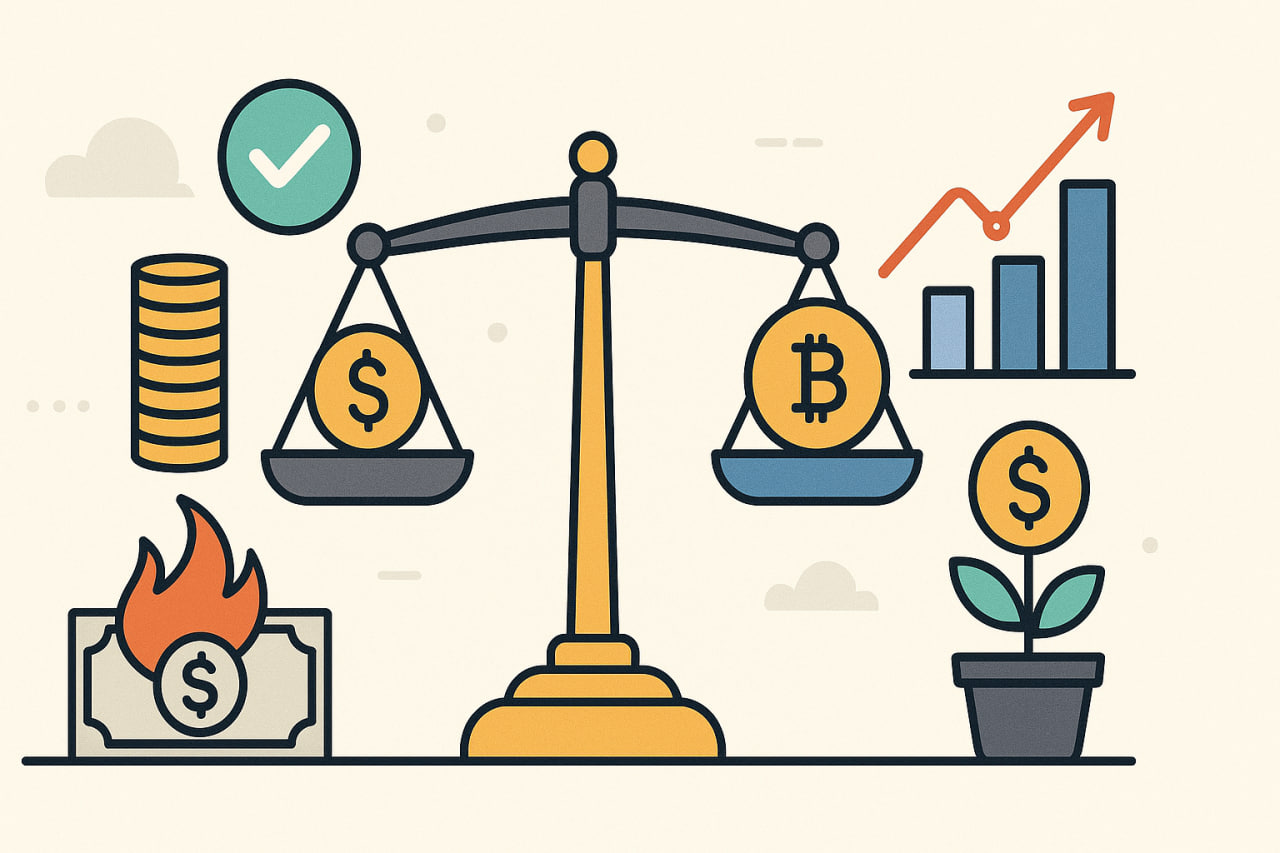Principles of Stable Trading: Focusing on Long-Term Profits Instead of Quick Wins

Contents
- Introduction
- What Is Stable Trading
- Why Focus on Long-Term Profits
- Best Practices for Long-Term Trading
- The Role of Capital Management
- The Psychology of Stable Trading
- Conclusion
Introduction
The cryptocurrency market is known for its high volatility, which makes it especially attractive to speculators seeking quick results. However, short-term successes are often accompanied by significant losses. In contrast, the concept of stable trading has emerged — a strategy focused on sustainability and long-term cryptocurrency trading. It helps minimise risks, reduce the influence of emotions, and create a foundation for systematic profits.
What Is Stable Trading

Stable trading is a method of conducting trades based on consistency, risk control, and discipline. Unlike aggressive short-term strategies aimed at quick profits, this approach emphasises sustainable long-term trading. The main goal is not instant profit but building consistent results over time.
Core Principles of Stable Trading
To build a reliable strategy, it’s essential to rely on a set of basic principles. They form the foundation that allows a trader to balance risk and return.
Key principles of stable trading:
-
Discipline in executing the trading plan:
Enter trades only in situations where your strategy gives a clear entry signal.
Ignore conditions where you lack confidence or face doubts. -
Risk management and loss limitation:
Define in advance the loss you’re willing to bear in case of an unsuccessful trade. The risk should be set in such a way that even a series of losing trades does not pressure you psychologically or become devastating to your overall deposit. -
Consistency in selecting and implementing strategies:
A thoughtful and deliberate choice will help you adopt a strategy you understand best. This, in turn, reduces mistakes in execution, minimises losses, and gives you greater confidence in decision-making. -
Focusing on long-term goals instead of quick wins:
The pursuit of fast and large profits often ends in losing the deposit. This happens because profit directly correlates with risk. By chasing quick results, traders may ignore or exaggerate risks, abandon their trading plan, and act on intuition rather than analysis. The lack of fast results and unjustified losses also creates psychological pressure, leading to even more mistakes. Altogether, these factors result in major losses and disappointment.
Why Focus on Long-Term Profits

Long-term trading strategies help traders detach from short-term market fluctuations and set realistic expectations for their strategies. This approach reduces emotional impact on decision-making and allows for using market cycles to find advantageous entry and exit points. Ultimately, it lays the groundwork for consistent trading and sustainable capital growth.
Risks of Quick Profits in the Crypto Market
The “quick results” strategy may seem simple, but it carries serious drawbacks. Chasing instant gains increases emotional pressure and raises the probability of mistakes.
Key risks of quick profits:
-
Impulsive decisions driven by emotions
-
High risk of capital loss
-
False sense of control
-
Heightened greed and fear of missing out
Best Practices for Long-Term Trading
Building a sustainable strategy requires a comprehensive approach that combines planning and control. Experienced traders and investors use methods that help them stay immune to market noise and maintain focus.
Practical recommendations for long-term success:
-
Develop a detailed trading plan before entering a trade:
The plan should include all the factors and conditions under which the strategy calls for entering and exiting a position. This reduces unnecessary doubts and emotions, simplifies decision-making, and lowers the risk of mistakes. A detailed trading plan is a vital part of stable trading. -
Keep a trading journal:
To track strategy effectiveness, it’s crucial to monitor and understand profits and losses from all trading operations. -
Analyse results and adjust the approach:
The market is constantly changing, and over time, strategies begin to show different outcomes. To spot when your strategy is losing effectiveness, it’s important to monitor performance. Reviewing results also helps identify your trading mistakes, understand their causes, and find ways to improve. -
Avoid excessive risk and control emotions:
Emotional control is one of the most important aspects of stable trading. Fear and greed often have a destructive effect on results, causing losses where they could have been reduced or avoided entirely. Emotions also lead traders to increase risk to recover losses or chase higher profits, which ultimately reduces returns or causes even larger losses.
The Role of Capital Management

Risk management plays a key role in building a stable strategy. Proper capital allocation reduces the likelihood of severe drawdowns and losses while preserving a foundation for future growth.
| Approach | Description | Advantages |
|---|---|---|
| Portfolio diversification | Allocating capital across different assets | Reduces overall portfolio risk |
| Risk/reward ratio | Defining the balance between potential profit and loss | Controls possible drawdowns |
| Averaging (DCA) | Regular small purchases | Reduces volatility impact |
| Position sizing | Setting a limit on trade size | Minimizes losses in case of mistakes |
The Psychology of Stable Trading

Even the best investment strategies lose effectiveness without psychological resilience. Trading psychology determines the ability to stay calm during sharp market moves and resist panic. Trading habits for stable profits include developing discipline and emotional control.
How to Avoid Emotional Decisions
Emotions are often the cause of devastating mistakes. To reduce their influence, it’s essential to prepare mechanisms of self-control in advance.
Methods to reduce emotional pressure:
-
Setting clear stop-loss and take-profit limits
-
Ignoring market noise and panic-driven news
-
Practising mindfulness and monitoring mental state
-
Regularly reviewing goals and adjusting expectations
Conclusion
Stable trading is not just a set of rules but a comprehensive philosophy of market interaction. Its value lies in transforming the chaotic and emotionally charged crypto market into a space for systematic and thoughtful decision-making. The long-term approach doesn’t bring instant gratification, but it allows traders to grow, improve their skills, and preserve capital in uncertain conditions.